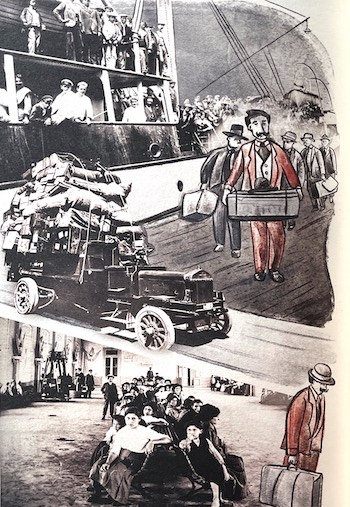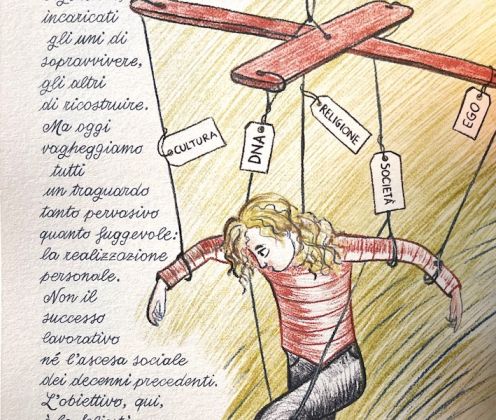Roots, Radici. (BeccoGiallo, 2022) is Bruna Martini’s new installment in her graphic memoir series and examines the author’s own altered identity. Once again Martini, who is the author of several graphic novels and picture books, shows her mastery of the genre, catapulting readers into the most diverse scenes and contexts, and keeping them gripped to the story until the very last page.
While in her previous work Patria (read the review here) Bruna Martini recounted the story of her aunt, in this volume we uncover details about the author’s own life, which is intertwined with that of a rather mysterious relative. He is an uncle named Cornelio Gracco, who was disowned and, just like a prodigal son, was later found: was he a runaway or a dreamer?

Cover image courtesy of the author
Through careful research that kept the writer busy for several years, the search of her ancestor’s past kept revealing new facets and details that prompted the author to embark on a journey to Argentina. Here she discovered a part of the family she did not know existed.
In Roots as in Patria, we travel through different stages of Italian history – in the present volume through the construction of Cornelio Gracco’s life: the war, the call to arms, Italian migrations to the Americas and the campaigns in favour of these migrations, the agrarian struggles, the peasants’ dreams for a better future, and much more.
Bruna Martini constantly reminds us of the importance of historical memory and history, and how history inevitably shapes the present. From this we can discover who we are, what we are experiencing, and where we are going.
The connection the writer feels with this ancestor drives her to investigate almost obsessively. It is through this connection that she feels less alone, knowing that she was not the only one in her own family to migrate. But she recognizes the difference. She migrated to be an artist because the reality she had close to her was too confining. Her ancestor migrated by necessity. However, both refused to follow the path towards a future that was predetermined.
Martini’s work makes allusions to many current themes, including the status of women in its many forms: the independent woman who deviates from the patterns imposed by society; the peasant woman who falls in love with the son of a landowner and follows him to Argentina; and with the image of the washerwomen, emblematic figures in Italian society, evocative of the early struggles of women for their rights. Communal washtubs were once a place for women to gather, and they soon became the sites for the gathered women to demand their rights.
Several of Bruna Martini’s illustrations will remain etched in the reader’s mind. Among them is a representation of the author as a puppet whose strings are moved by forces outside her control such as culture, DNA, society, ego, and religion. Through this image the author emphasizes how sometimes all these things make us feel like we are dragged along without full control of our lives.

Image courtesy of the author
The graphic memoir also analyzes the plight of migrants and the sometimes-harsh conditions they find themselves in. The once-upon-a-time long ocean voyages to America – the desperate and unsanitary conditions of the voyages, and the scams often confronting immigrants once they landed – echo the tragic reality of today’s illegal migrants from the southern Mediterranean to Europe. In the case of Cornelio Gracco, migrating to Argentina did not guarantee him the wealth he had hoped for; arriving as a middle-class man, he found himself living in extreme poverty. In the case of the writer, she too is forced to confront her emigrant status in London, where she realizes that she is at a disadvantage, as her way of life often clashes with the place she lives in. But in spite of this she manages to reinvent herself and rethink her roots and her new, “altered identity.”
Maria Pia Spadafora is a freelance writer living in Milan.




